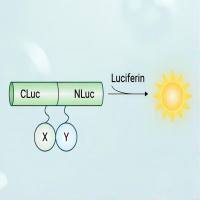Dynamic Imaging of Brain Function
互联网
705
In recent years, there have been unprecedented methodological advances in the dynamic imaging of brain activities. Electrophysiological, optical, and magnetic resonance methods now allow mapping of functional activation (or deactivation) by measurement of neural activity (e.g., membrane potential, ion flux, neurotransmitter flux), energy metabolism (e.g., glucose consumption, oxygen consumption, creatine kinase flux), and functional hyperemia (e.g., blood oxygenation, blood flow, blood volume). Properties of the glutamatergic synapse are used to model activities at the nerve terminal and their associated changes in energy demand and blood flow. This approach reveals that each method measures different tissue- and/or cell-specific components with characteristic spatiotemporal resolution. While advantages and disadvantages of different methods are apparent and often used to supersede one another in terms of specificity and/or sensitivity, no particular technique is the optimal dynamic brain imaging method because each method is unique in some respect. Since the demand for energy substrates is a fundamental requirement for function, energy-based methods may allow quantitative dynamic imaging in vivo. However, there are exclusive neurobiological insights gained by combining some of these different dynamic imaging techniques.








